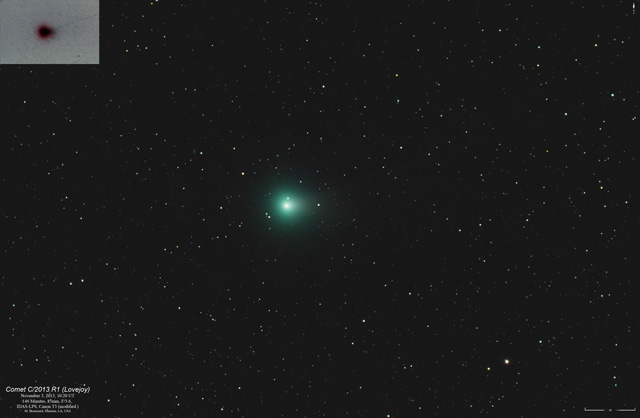
Comet Lovejoy is dominating the comet fiesta that is now occurring in our skies. It is the brightest and the biggest, by far! My most recent images show a 70 arc-minute tail that is best seen in the negative inset view.
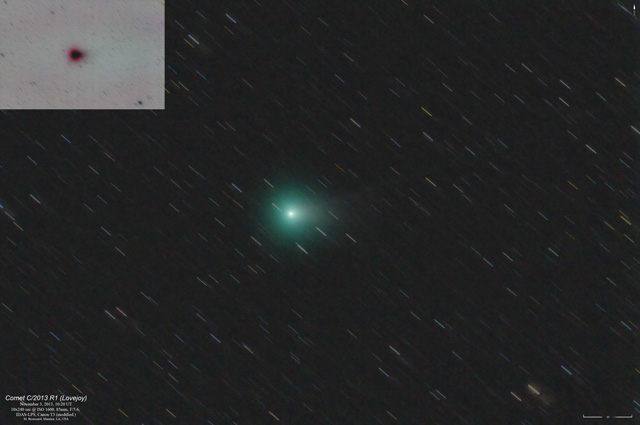
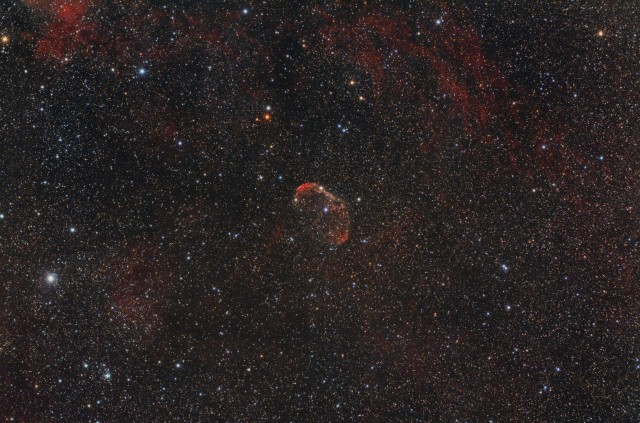
I was looking at some unprocessed data recently (Oct 5, 2014) and found this set of 40 sub-images taken at ISO 6400. It was a batch of 60 second subs, so only 40 minutes worth of integration. It came out surprisingly well for just 40 minutes. I’ll have to try some more with that setting and see if I can get some dimmer nebulae.
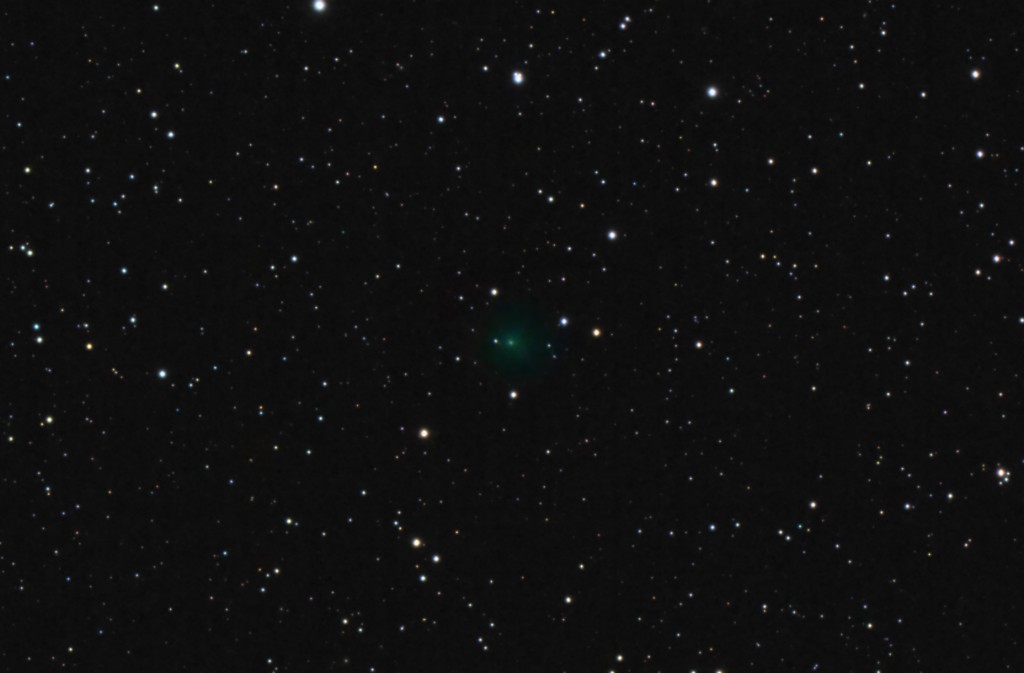
A very small and dim comet in the early evening skies of Pegasus. A star streaks version of the image is below.
Continue reading Comet Brewington on November 2, 2013, 17:10 UT
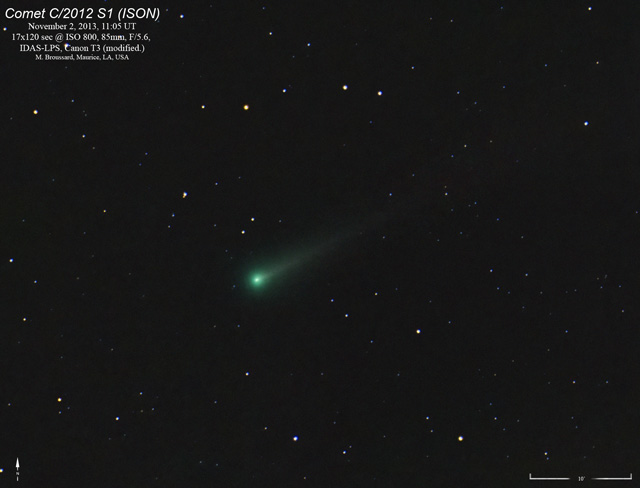
Friday, November 1st, 2013 was clear and cool. I was convinced that Saturday morning would be crystal clear and I could get some great shots of all the comets in the sky. Unfortunately, the sub-tropical jet stream intruded and brought with it high altitude clouds and ruined my plans to do my comet imaging.
I shot lots of subs for ISON, but deleted more than I kept because most had clouds in them. Some had tree branches and I kept them because I had nothing else. Consequently, the image quality suffered with the low number of sub-images and the gradients introduced by the tree branches in the pics. Oh, well…
BTW, the star-streaks version is below: